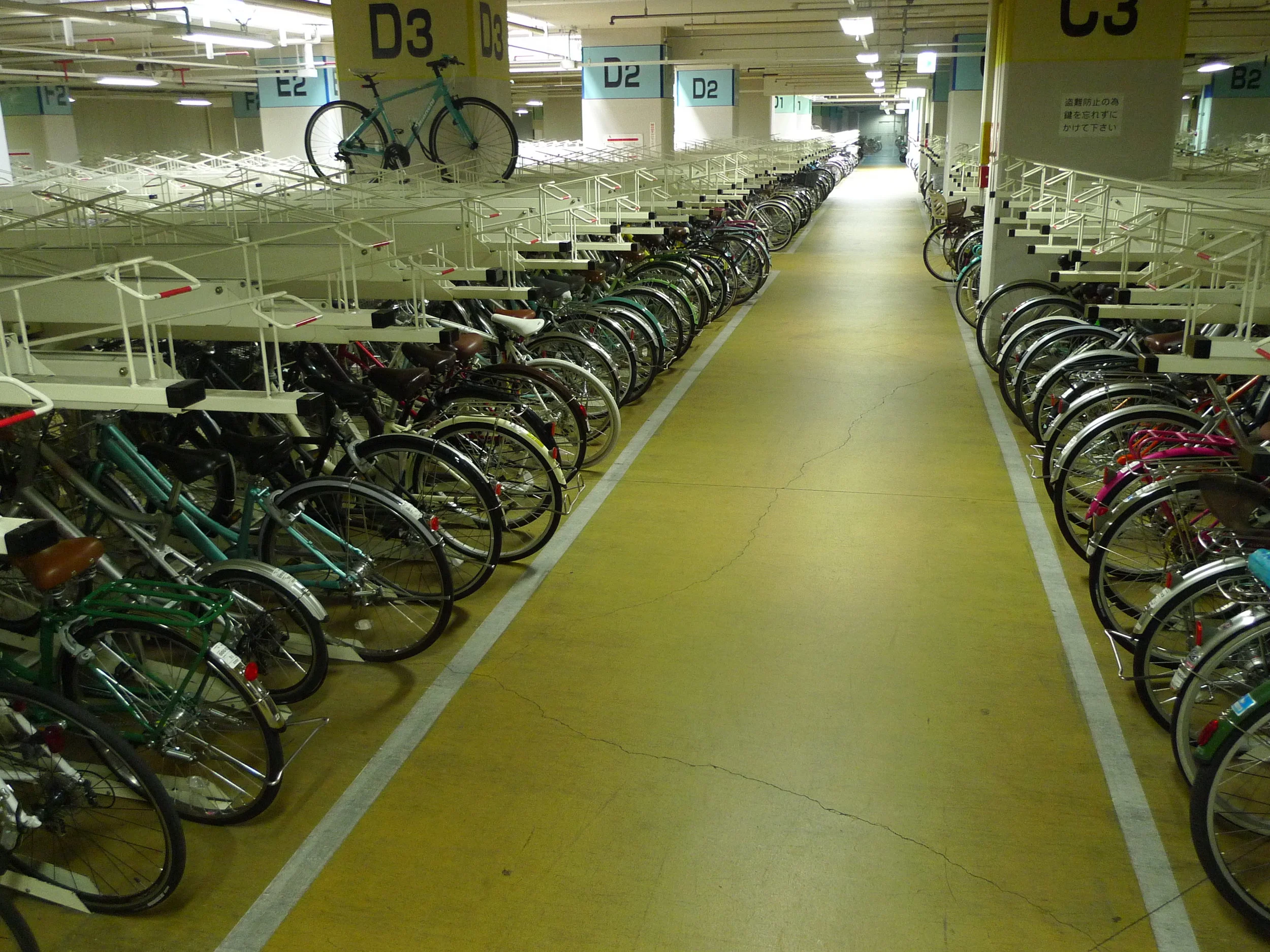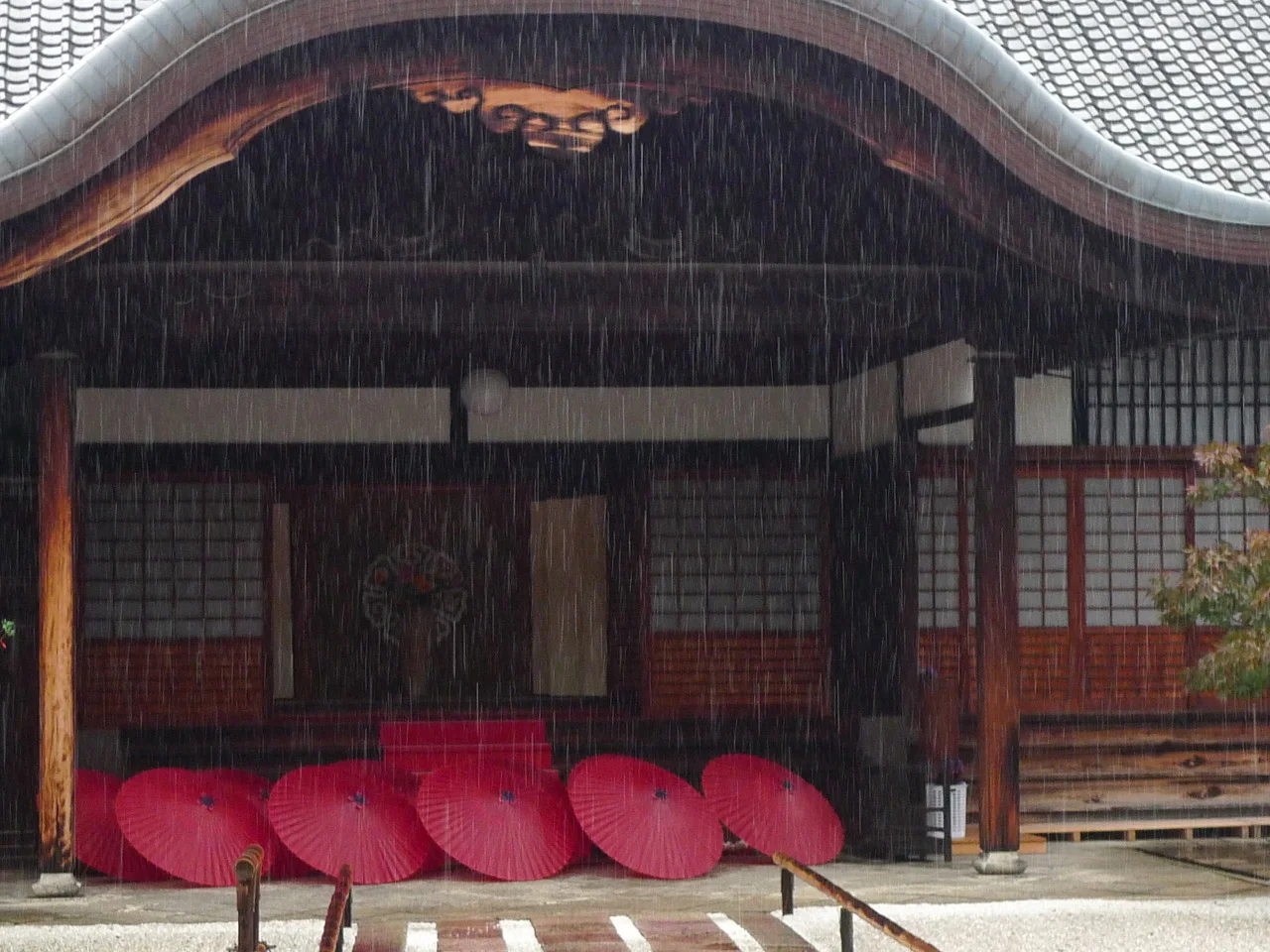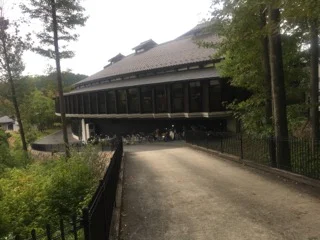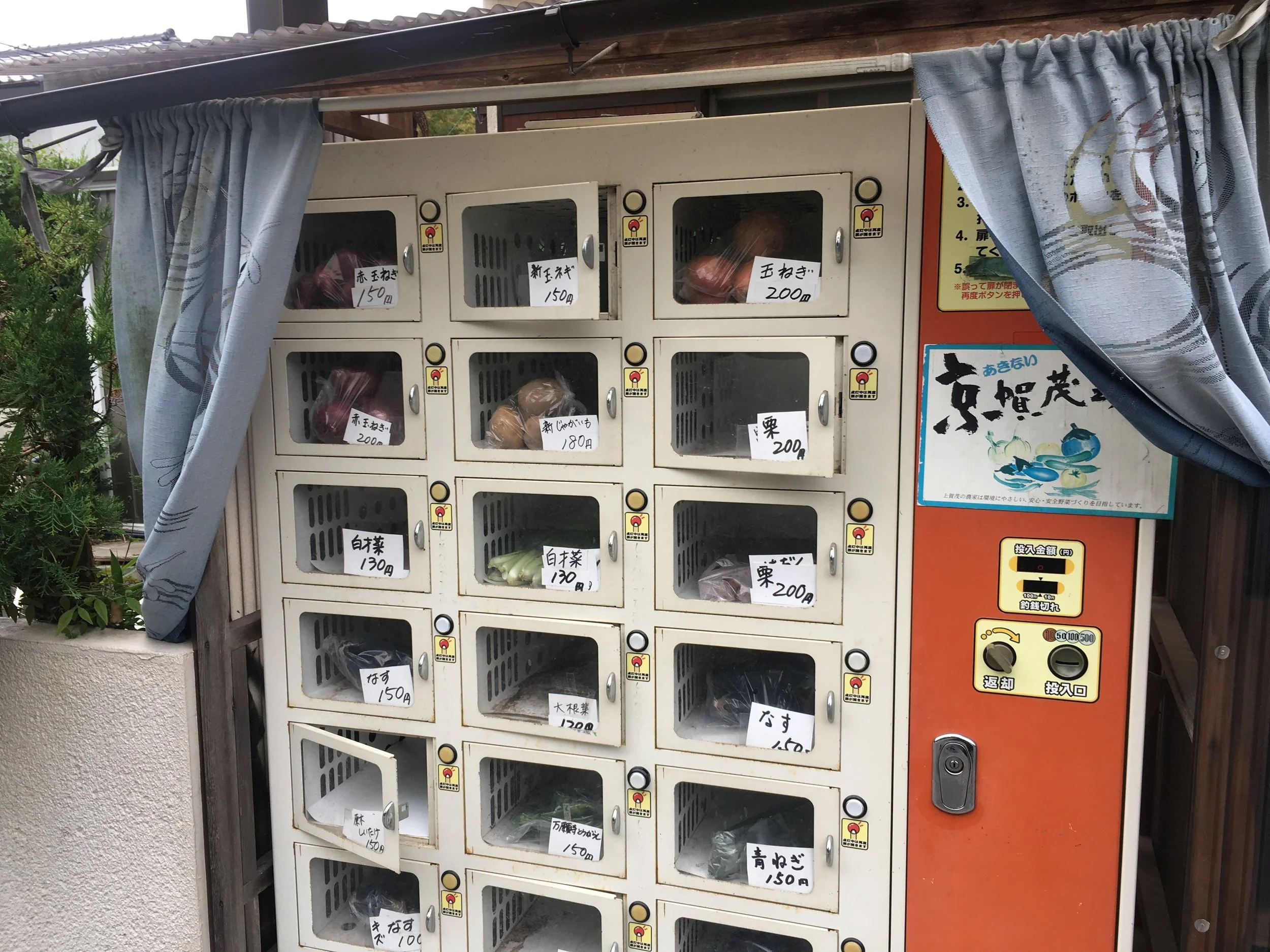Kyoto Diaries - 2
Fall is starting to creep into the leaves, hints of rust, red, orange and pink are appearing in the vegetation. This week had a couple of cool days and rain. More hot humid and muggy weather is predicted though. This is a city of water, over 60 inches of rain a year. It is nestled on 3 sides by heavily forested mountains (Japan after the second WW aggressively reforested its devastated landscapes), and the city is crisscrossed with canals, and little streams. Two major rivers flow through it, habitat for herons, hawks and lots of other water birds. From a bridge the other day, I saw a carp that must have been 3 feet long, lazily swimming about. The rivers are soft bottomed but the embankments tend to be hardened, lined with walking and cycling paths that are well used. The rivers are quite beautiful. And along the canals and streams that meander through town there are walking and cycling paths too, the human scale of the urban fabric reflects a time when people walked. Often too, these intimate neighborhoods have little corner stores, grocery, alcohol, kimono stores, some random boutiques and quite a few restaurants. Makes walking around a feast for the eyes and smell. It's a constant discovery process. I wonder how it is possible? is it that rents are affordable? Perhaps these are places that have been there a long time so land rent is low? One of the problems facing cities like LA is that small idiosyncratic stores face such high rents and land costs, they can’t survive, erasing entrepreneurialism, diversity, originality, and ultimately quality urbanism. LA is a relatively arid place urbanistically, and partly its due to how expensive land rent is.
Kyoto is also a bicycle city. The Japanese bicycles are much like the Dutch ones, cruisers, well-geared for coasting and just getting around, they are very comfortable to ride as one is sitting up, and they are built for carrying stuff. The most common are known as mamachari (the mother’s bike), typically equipped with a basket and/or child seat (at least one), in-hub lights, built in lock, and cool back tire kick stand. People leave stuff in their baskets when they park, clearly theft is not an issue. And since it rains so much, very practical rain gear is widely available: bike rain capes that cover your front basket, zip up covers for front and back baskets in various fabrics and colors, from polk-a-dot to plain, seat covers, baby protectors and more. Fun watching.
Last weekend I took a 45-minute train ride from the downtown Kyoto train station (a huge infrastructure, several different levels, full of commerce) to Nara, an ancient temple city and seat of religious power. It is known for its extraordinary temple architecture and the deer that wander freely and tamely among the visitors. Special deer food is for sale(150 yen, about $1.30), thin wafers sold in packets (made me think of communion wafers). Deer can be quite demanding! They nudge and butt people for food. Some have their horns sawed off. They are lovely small animals with white spots. So Kyoto has its monkeys, Nara has its deer. Both nurtured and cultivated by humans.
The one temple I visited – can’t really take in more than one at a time, they are so intricate, so different architecturally than my cultural understandings – contained a renowned giant bronze Buddha. It must be 50 feet high (16 meters) and maybe 30 feet wide, so imagine the structure needed to honor such an artifact, HUGE, and all wood. All around are minor gods and 25 foot high wooden sculpted warriors, scholars and other divinities. People light candles and pray. This is deistic Buddhism at its most grand. The temple was first built ~ 850. It burned down several times and this latest version dates from about 1645. The grounds are magnificent, stately, exquisitely proportioned. Nara itself has an old quarter that was fun to explore. Its organized, like most older Japanese city neighborhoods I am discovering, around narrow streets, maybe 10 feet wide, buildings that are up to 3 stories, lots and lots of little quirky shops and restaurants. Again, a scale that feels accessible, welcome, non-threatening, built for humans.
The Kyoto National Museum of Modern Art is exhibiting a life retrospective of Koji Kinutami’s work. It is mind blowing. He grew up more or less abandoned by his parents in a temple in Nara, went to art school and to study art in Italy. His work is inspired by Buddhist texts and gods, Italian frescos, and manga. The pieces, often very large, depict war and environmental degradation, wrathful Buddhist gods, serpents and dragons and pathways to peace and beauty. Hard to describe, very moving, reminded me of science fiction. The colors are brilliant. He is also experimenting with animation. A free spirit, quite inspiring.
One thing I discovered walking to the local light rail line across the street and through the small residential neighborhood where there is a micro bakery open 2 afternoons a week, was a vegetable vending machine!! In front of one of the houses, clearly where a farmer lived (his front porch covered with bags of NPK fertilizer – nitrogen, phosphorus and potassium, and his farm implements in the driveway) was this vending machine with onions, potatoes, eggplant, peppers in little bags, for sale. Put in the coins, make your selection, and voila, dinner! Ingenious, but hardly enticing with the evidence of his growing methods right there. . . hum. Japan struggles, I think, with the use of chemicals in agriculture, no different than us, of course. There is a big interest in organics in Japan, and you can find them in the market. But, there is, in fact, a lack of organic matter for fertilizing in the country. Before the big modernization push period post war, organic amendments to the soil largely consisted of leaves and leaf duff collected in the nearby forests, grasses and weeds collected on verges. These were laboriously harvested and collected and worked into the soil by hands and feet. Agricultural productivity was pretty low. The advent of chemical fertilizers greatly improved crop yields and reduced manual labor needs. In addition, the development of machinery sized for small fields (you see it used daily in the little plots that riddle housing developments, and are commonplace where we are living), has made a big difference too, much of the maintenance of these fields is done by contract labor that owns the machinery. In California too, incidentally, the Japanese were at the forefront of developing small scale specialized agricultural machinery, like for strawberry field cultivation. Here many of the small rice fields, some really tiny, are machine harvested, though the rice is then often hand bundled and hung to dry on hand erected bamboo frames. Its quite picturesque. But Japan imports most of its food, and despite huge reforestation, the timber is not harvested because labor costs are high – or so I was told by one of my colleagues at the Institute. Instead, timber is imported from Indonesia, and one can only wonder about the ecological impacts involved.
It is amazing to realize that this country is the size of California but has 140,000 million people to California’s 40 million. The greater Tokyo metropolitan region is ~ 40 million to itself. Osaka’s metro area has 20 million people. The rural regions are emptying out. This poses some hugely interesting questions for sustainability.
Mists are lifting, its Saturday.





